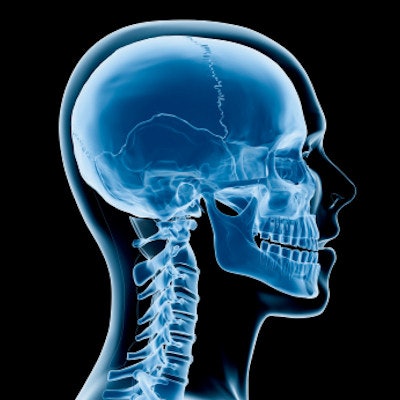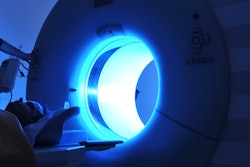
More than one-third of head CT scans performed on emergency department (ED) patients are unnecessary, according to a new study published online in the Journal of the American College of Radiology.
Researchers from Chaim Sheba Medical Center in Ramat Gan, Israel, found that overuse of emergency head CT was especially pronounced in younger patients -- up to 37.3%. This is a problem not only because unnecessary CT inflates healthcare costs, but also because it needlessly exposes patients to radiation, lead author Dr. Eyal Klang and colleagues wrote (JACR, November 8, 2016).
 Dr. Eyal Klang from Chaim Sheba Medical Center.
Dr. Eyal Klang from Chaim Sheba Medical Center.Klang's personal experience inspired the study.
"As part of my job I work in the ED, interpreting neurological CT examinations, and I've observed the common overuse of head CT examinations for mild traumatic head injuries," he told AuntMinnie.com via email. "This observation prompted me and my colleagues to study the rate of head CT overuse at our hospital."
Is it necessary?
Traumatic brain injury (TBI) is a common cause for emergency department visits, with more than 2.4 million U.S. patients presenting with these injuries in 2009, Klang and colleagues wrote. The primary tool for detecting structural brain injury after a TBI is head CT without contrast.
However, based on the Glasgow Coma Scale, more than 75% of TBIs can be categorized as minor and may not fit the criteria for head CT. In fact, according to a 2014 study published in JAMA Internal Medicine, head CT is fourth on a list of the top five tests deemed to be of little value in the emergency room.
To investigate head CT use in the ED, Klang and colleagues included 955 brain CT exams performed for minor head injuries between January and December 2014 at the medical center, gathering the following patient data: demographics, cause of head trauma, and the referring physician's seniority and specialty. The researchers determined whether the scans fit the Canadian CT Head Rule (CCHR) criteria, which is the earliest and most commonly used; they also assessed the sensitivity and negative predictive value of the CCHR criteria for CT exams in patients younger than 65.
Of the 955 exams, 10.9% were not clinically indicated according to the CCHR criteria. But in the 279 exams performed on patients younger than 65, that percentage more than tripled, with 37.3% exams not being indicated.
Klang and colleagues found that neurologists tended to order more unwarranted CT exams (odds ratio, 3.5), while surgeons tended to order fewer CTs (odds ratio, 0.6) -- although the surgeons' odds ratio was not statistically significant. There was no association between physician seniority and ordering unwarranted CT exams.
Physicians tended to order head CT scans for patients who had been in car accidents and those who had been hit on the head with an object, even if the exam wasn't indicated by the CCHR criteria. The criteria had 100% sensitivity and negative predictive value for brain hemorrhages and fractures.
Cutting overuse
The study findings suggest that reducing nonindicated head CT is a good idea. But how?
Klang and colleagues offered clinical decision support as an effective tool, citing a recent study that showed an 8% reduction in ED head CT studies after such a system was put into place (American Journal of Emergency Medicine, March 2015, Vol. 33:3, pp. 320-325).
"Analysis of the causes for overuse can be used to target specific intervention programs such as education of staff members, protocol implementation, and implementation of computerized decision rules," the authors wrote.
In fact, Klang's group has already begun the second stage of this research, which will focus on exactly that: educating physician colleagues and putting decision-support tools in place, he told AuntMinnie.com.
"We are currently devising the next stage of this project that will include ED staff education, and the implementation of computerized decision rule protocols within our electronic medical records," he said."This rule-based decision support will alert ordering physicians when a CT is not necessarily indicated in cases of traumatic head injuries."





















